
views
Taking Measurements Correctly
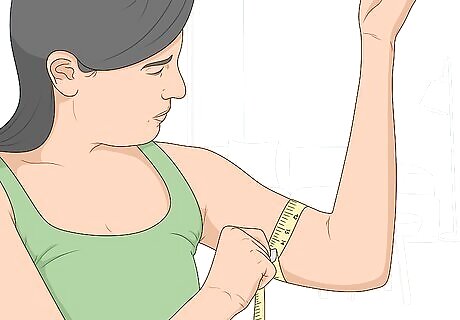
Take your measurements before working out to get accurate results. When you lift, your arms get a big rush of blood that causes them to expand. Your muscles also tend to look a little bigger in the hours after a workout as the muscles repair themselves. To get an accurate reading, take your arm measurements right before you work out to ensure that your arms have had adequate time to return to their natural size.Tip: In bodybuilding, the mass you gain immediately after working out is referred to as “pump.” When you measure with a pumped arm, you’re really not getting an accurate result. It can be fun to take a pumped measurement and see how big you can get, though! If you measure after lifting, you may artificially add up to 1 in (2.5 cm) to your measurements. If possible, take your measurements at the same time of day every time you measure. This will also help you get the most accurate results possible.
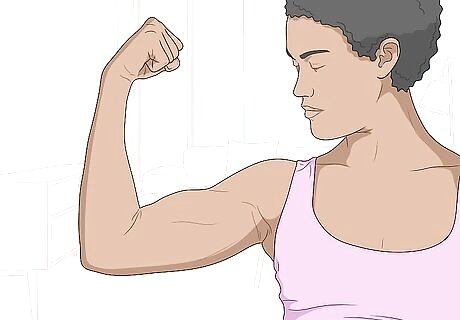
Flex your muscles while measuring or don’t, but stay consistent. You can take any arm measurement while you’re flexing or relaxing. Since the goal is to track your developments over time, it doesn’t necessarily matter which option you choose since your muscles should be getting bigger regardless. However, you must stay consistent. If you’re going to flex, do it every time you measure. This way you can track the gains accurately. The one exception here is for your wrists. You cannot take an accurate wrist measurement when tightening your fist due to the way tendons change the shape of the wrist. Many bodybuilders track both measurements. It’s totally up to you how you want to track your gains.
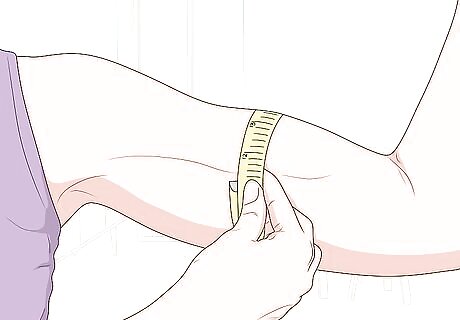
Keep the measuring tape flush against the skin when measuring. When you take each measurement, the measuring tape must be tight against the skin. However, if you pull it so tight that the surrounding skin is popping up past the tape, you aren’t getting an accurate measurement. Keep the measuring tape flush with the skin, but not so tight that you’re artificially cutting your measurements down.
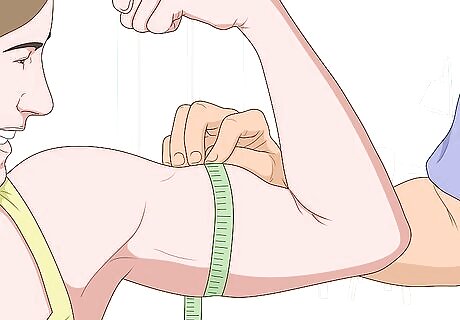
Enlist a friend to do this if you’re measuring your own gains. It’s pretty difficult to get an accurate reading with a measuring tape if you’re taking your own measurements. Not only is it hard to hold the tape still and even, but leaning across yourself with a measuring tape will cause certain muscles on your side and shoulder to flex or relax, which can dramatically change the results. The 2 measurements you can take on your own are the wrist and the forearm. You can’t measure your triceps or biceps on your own, though.
Measuring Your Biceps
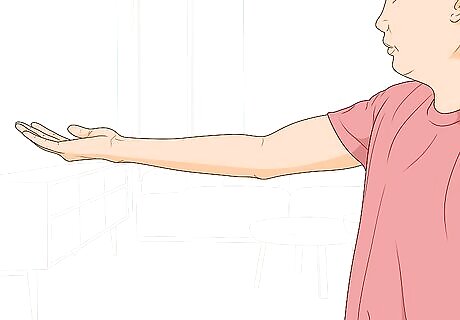
Raise your arm up so that it’s parallel to the ground. Stand up straight. Choose an arm to measure and raise it up so that your arm is pointing straight away from you. Turn your palm so that it’s pointing up.Tip: Most people choose to flex when measuring their bicep. This is mainly because it looks really cool. There’s nothing wrong with your measuring your bicep when it’s not flexed. You cannot get an accurate bicep measurement if your arm isn’t raised. In bodybuilding competitions, there are typically 3-5 poses that involve the biceps. This is why bodybuilders seem to focus so heavily on these muscles.
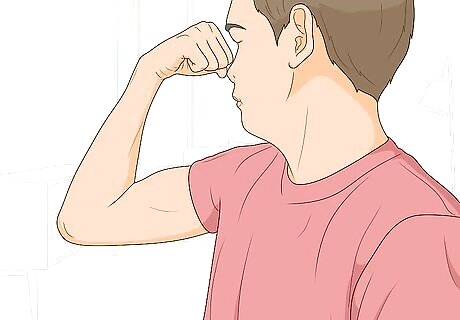
Make a fist and bend your arm up towards your head. Keep your bicep parallel to the ground. Make a fist and place your thumb on top of your middle finger. Then, use your elbow to bend you forearm towards your head. Keep the back of your hand pointing straight up with your middle knuckle pointing towards you. Your forearm should rest at roughly a 75-degree angle to your bicep. You may have seen photos of bodybuilders flexing their biceps with their wrists pointing away from their head. This is a common competitive pose, but it isn’t the best way to measure your biceps since it requires you to contract your forearm, which may detract from the size of your bicep.
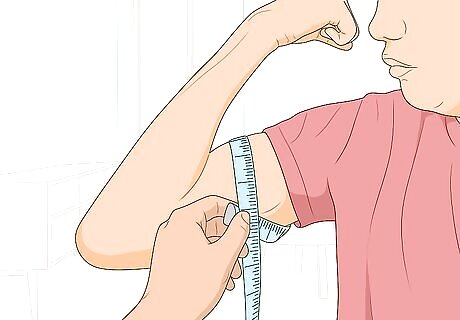
Wrap the measuring tape around the thickest part of the bicep. Slide the measuring tape over the bicep and pull it through underneath. Curl the measuring tape around itself and adjust it so that it rests over the thickest part of the arms, perpendicular to the floor. The thickest portion of the bicep is typically in the middle of the muscle, equidistant between your elbow and your shoulder.
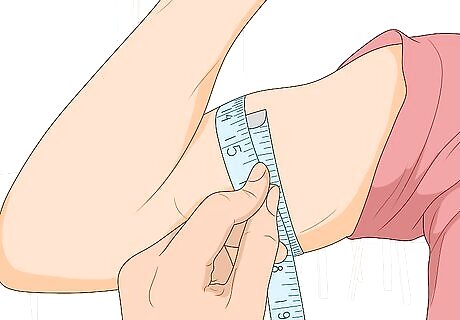
Line the tape up so that it’s even and take the measurement. Adjust the measuring tape so that the cloth rests vertically around the arm. Slide the end of the tape over the longer portion of the measuring tape and record the measurement at the exact hash mark where the two pieces of the measuring tape meet. You don’t really need to measure the other arm, but you can if you’d like to. This applies to the other measurements as well—your left and right muscles should be roughly the same. For personal tracking purposes, you can round up or down if the measuring tape sits between 2 hash marks. It doesn’t matter which you choose, but stay consistent and always use the same method to measure your arms. Get as accurate as possible with your measurement. Use the smallest hash marks available on the measuring tape to determine the size of your biceps. The smallest marks are often ⁄16 in (0.16 cm).
Measuring Your Triceps
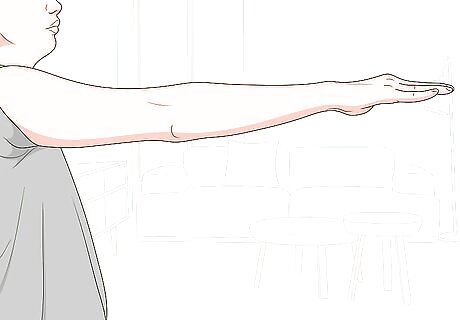
Stick your arm out so that it’s in line with the shoulder. Keep your arm straight and hold it up so that it points directly away from your shoulder. Keep your palm facing down. Hold your arm as steadily as possible. The triceps are the muscles behind your biceps. They run from the elbow to the shoulder. They are not nearly as popular to track as biceps, but they’re equally important from a bodybuilding perspective. There are 3-4 competitive poses that emphasize the triceps.
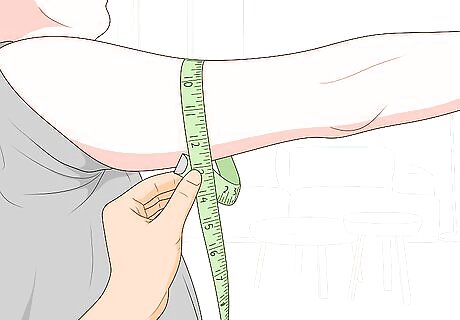
Curl the measuring tape around the biggest part of your arm. The thickest part of the arm will likely be close to the shoulder where the deltoid feeds into your arm muscles. Hang the measuring tape over the arm and line it up vertically with the thickest part of the arm.Tip: Be careful here not to measure the shoulder—the measuring tape shouldn’t brush against your armpit while measuring the triceps. Typically, it will rest roughly 3–6 inches (7.6–15.2 cm) away from the shoulder where the back of your arm is the thickest.
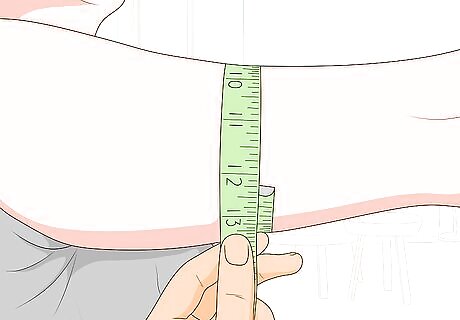
Take your measurement with the tape lined up vertically over itself. Pull the end of the measuring tape under the arm and wrap it over the other half of the measuring tape. Line the two halves of the measuring tape up so that they’re in line with one another and resting perfectly perpendicular to the ground. Note the measurement where the end of the measuring tape meets the other half of the tape. Be as accurate as possible and use the smallest hash marks on the measuring tape to track your triceps. You can round up or down, but use the same method every time you measure.
Measuring Your Forearms
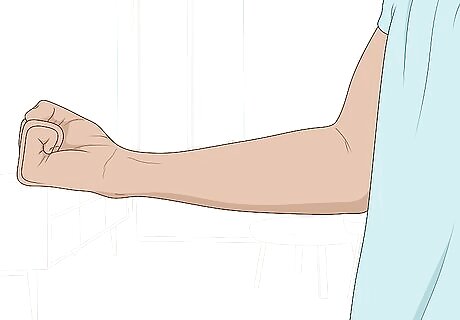
Hold your forearm up in front of you and make a fist. Let your upper arm rest at your side and lift your forearm up so that it’s resting in front of you or next to you. Make a fist and rest your thumb over your middle finger.Tip: The forearms take quite a bit of time to build up compared to the biceps and triceps. Do not get discouraged if you don’t see big gains here during the first few weeks of a new workout regimen.
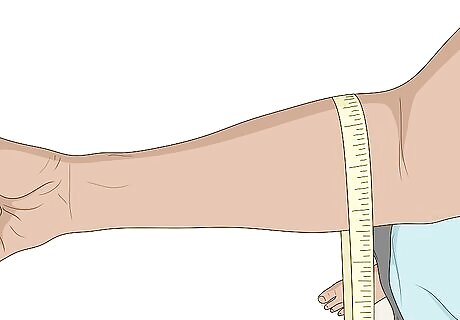
Find the thickest part of your forearm and wrap the tape around it. Locate the spot on your forearm where the muscle appears to be the widest. Typically, this will be 2–3 inches (5.1–7.6 cm) above the elbow. Wrap the measuring tape around this portion of your arm.
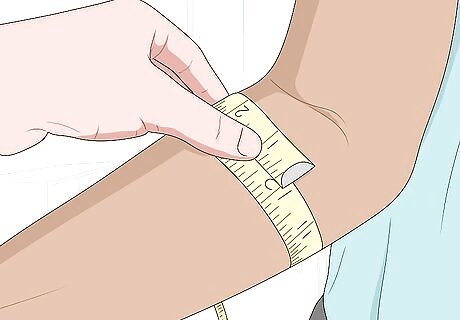
Note your measurement with the tape lined up. Adjust the measuring tape so that the 2 halves of the tape line up with one another. Note the measurement where the end of the measuring tape lines up over the other half of the tape. Since your forearms won’t experience a ton of rapid growth, pay particular attention to the smaller has marks. Those ⁄8–⁄16 in (0.32–0.16 cm) hash marks are really important for forearms! Round up or down based on your personal preferences. Be sure to use the same method every time you check your forearm!
Measuring Your Wrist

Hold your hand straight and spread your fingers out. Rest your bicep the same way that you measured your forearm. Lift your forearm up in front of you and spread your fingers out comfortably like you’re going to high five a friend. Keep your wrist straight with your forearm so that the top of your forearm aligns with the back of your palm.Tip: Many bodybuilders don’t bother tracking their wrist measurements regularly, but it’s easy enough to do on your own and you might as well if you’re measuring the rest of your arms. After the forearm, the wrist is where you’re least likely to see immediate gains with a new lifting routine.
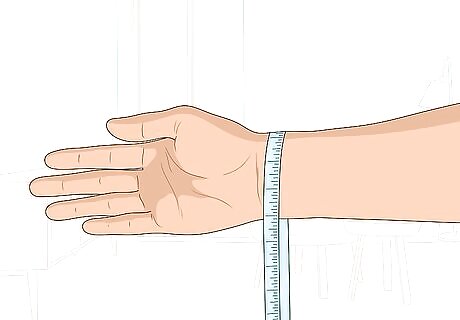
Place the measuring tape under the bones in your wrist. Wrap the measuring tape around your wrist. Look or feel for the 2 bony bumps on either side of your wrist. Adjust the location of the measuring tape so that it rests just underneath these 2 bones. These 2 bony bumps are the ends of your radius and ulna.
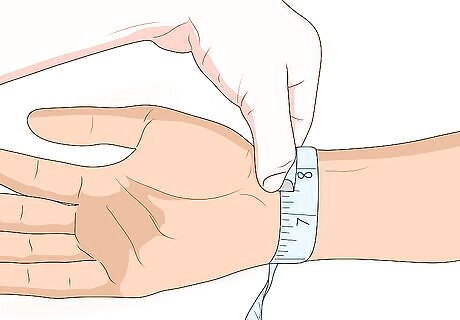
Take your measurement with the tape resting under the bones. Wrap the end of the measuring tape over the longer length of the tape and line the tape up so that it looks like a straight bracelet running around your wrist. Take the measurement where the 2 halves of the measuring tape meet on your wrist. Try to get as accurate as possible with your hash marks. Like the forearm, this part of your body is unlikely to experience giant changes right away, so tracking minor changes over time is a great way to see your progress. Feel free to round up or down, but always stick with the same method every time you measure.




















Comments
0 comment